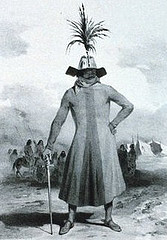Ernest Hemingway’s former home in Key West, Fla., contains a colony of six-toed cats.
The author had a sailor’s love of polydactyl cats — their extra toes are considering good luck at sea, giving them superior abilities to climb and to hunt shipboard rodents.
So when Hemingway received a six-toed cat from a ship’s captain, he provided for its descendants in his will. There are currently about 60 cats at the Key West house, and about half of them have extra toes.




